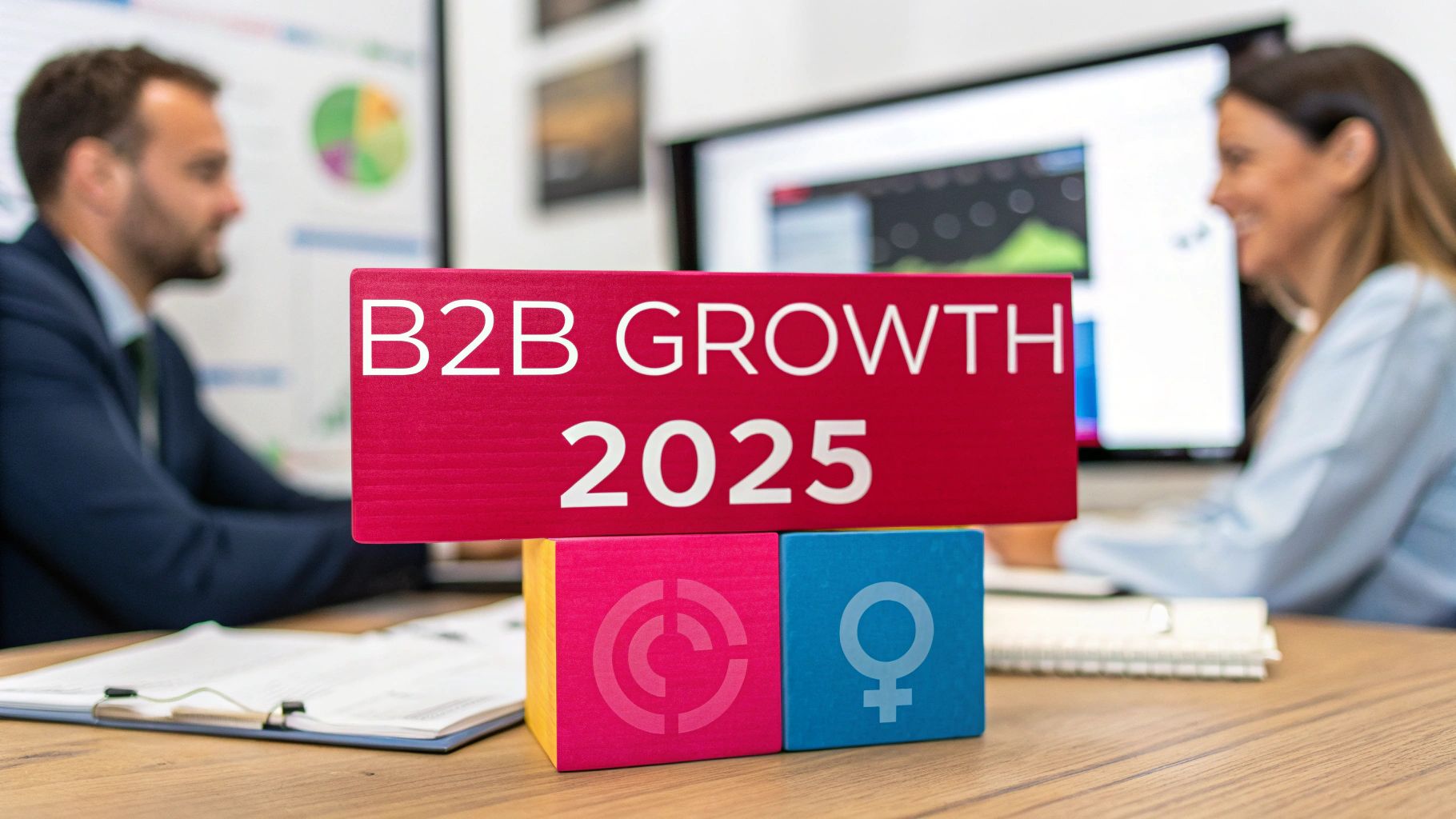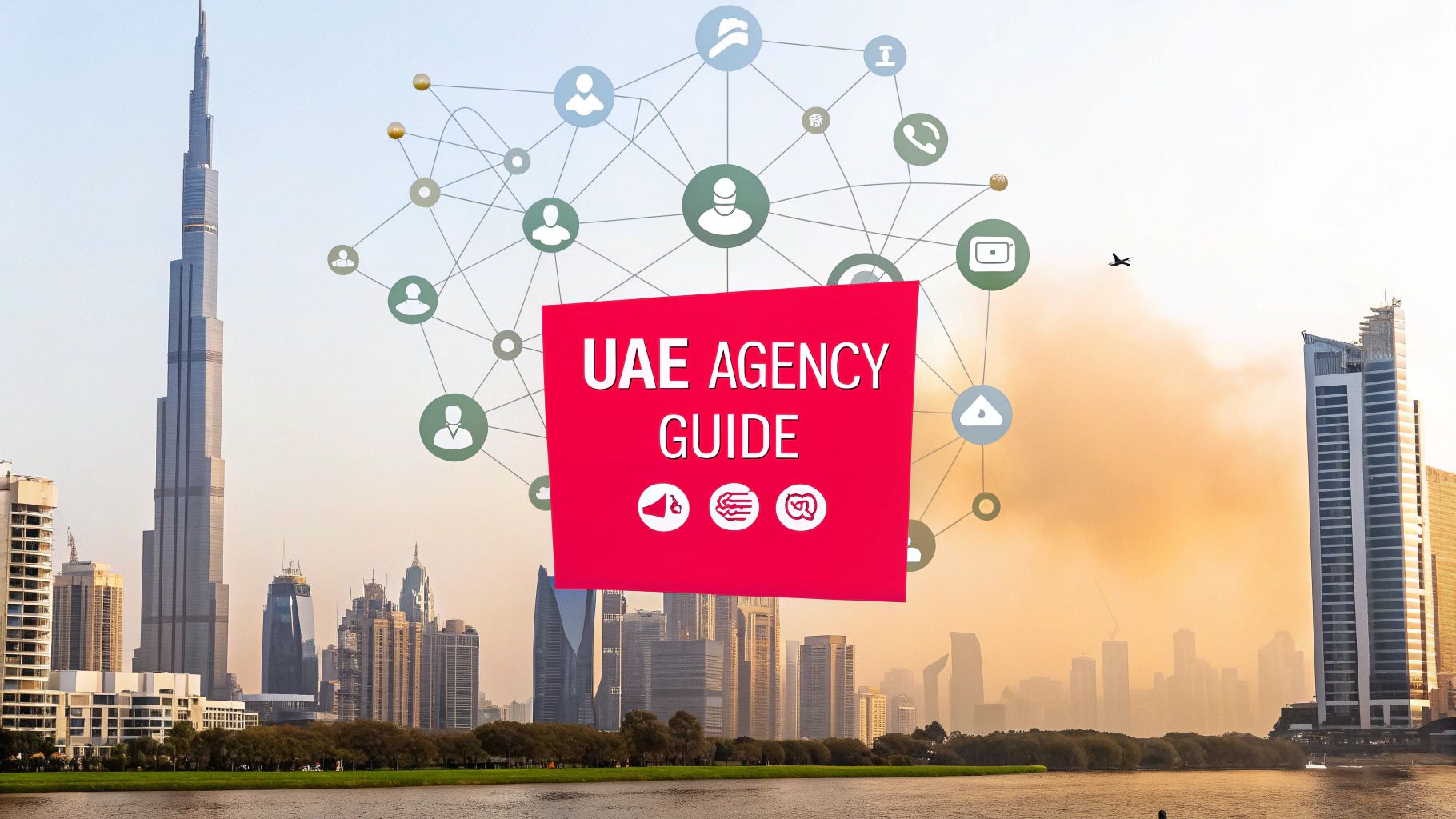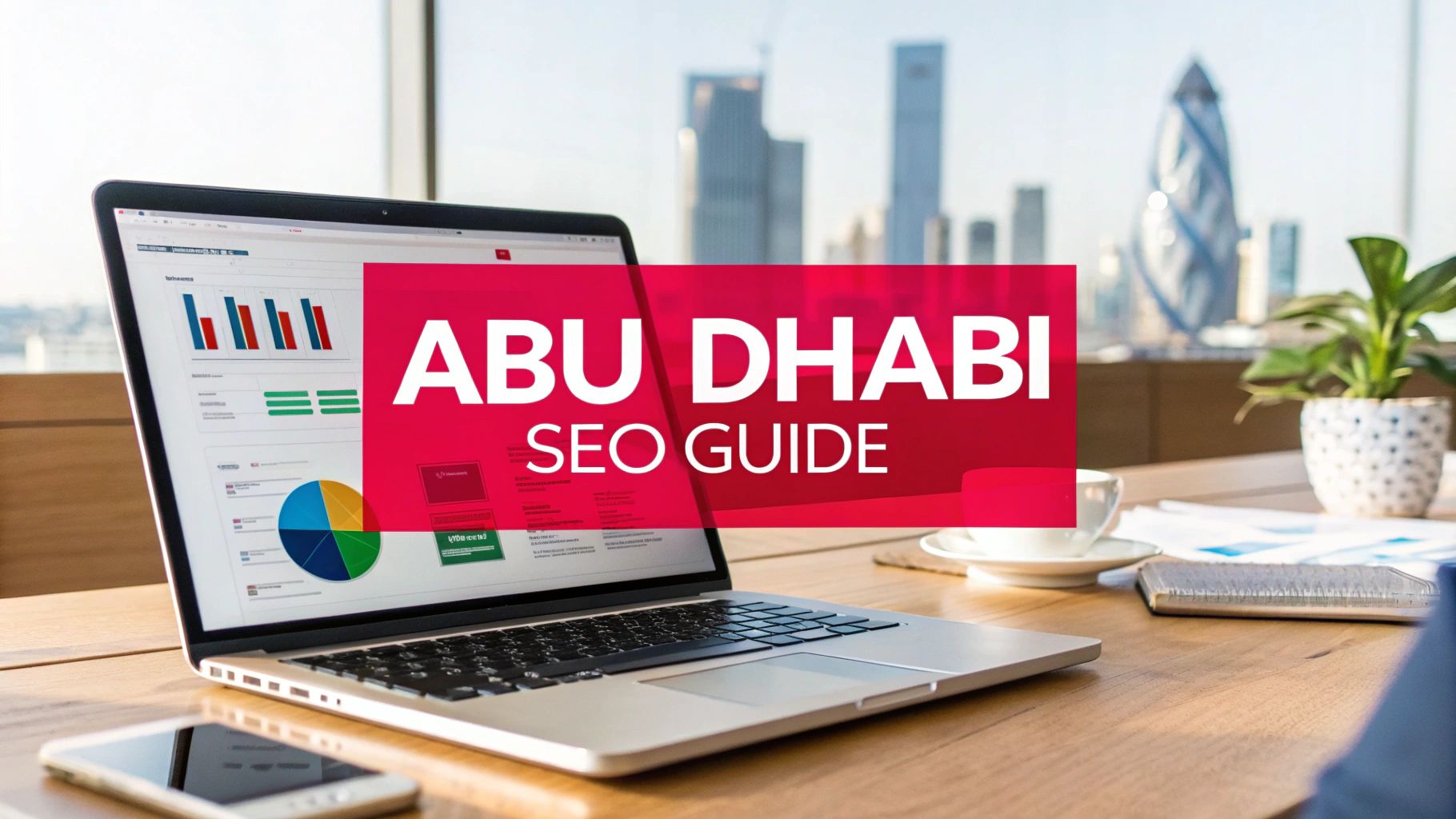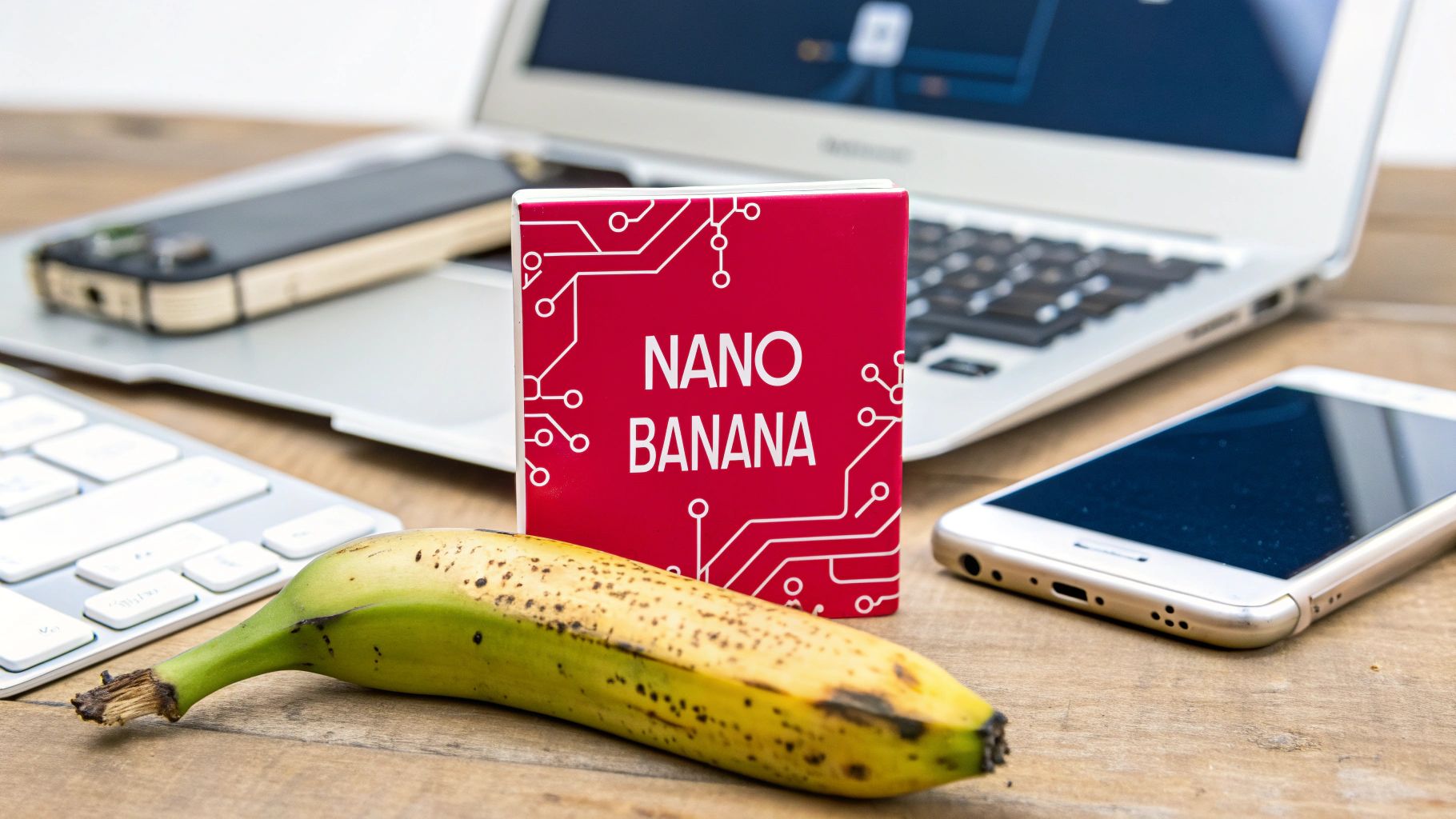In the ever-evolving B2B landscape, staying ahead means moving beyond generic tactics and adopting a multi-faceted approach. The standard sales cycle is longer, the decision-making committees are larger, and the demand for proven ROI is higher than ever. Simply generating leads is not enough; the real challenge lies in attracting high-value accounts, nurturing them with personalised experiences, and converting them into long-term partners. Successfully connecting with other businesses requires a sophisticated and well-organised plan. To effectively navigate this complex environment, it is crucial to understand various overarching approaches, including how to implement essential corporate communication strategies.
This article cuts through the noise to deliver 10 potent B2B marketing strategies that are proven to work. Forget vague advice and surface-level tips. We are diving deep into actionable frameworks designed for measurable results. From the hyper-focused precision of Account-Based Marketing to the scalable power of AI-driven personalisation, we will dissect each strategy with the detail you need to act. You will find practical implementation steps, real-world examples, and fresh perspectives to give you a competitive edge.
Whether you represent a startup seeking affordable expertise, an established corporation aiming to revamp its digital presence, or a brand targeting the UAE market, these insights are for you. We will cover a comprehensive range of tactics, including:
- Content and Video Marketing
- SEO and SEM
- Account-Based Marketing (ABM)
- Email and Marketing Automation
- LinkedIn and Influencer Marketing
Prepare to move beyond theory and into execution. This guide is your blueprint for building a resilient, growth-focused marketing engine that delivers tangible value and fosters lasting business relationships.
1. Content Marketing
At its core, content marketing is a strategic approach focused on creating and distributing valuable, relevant, and consistent content to attract and retain a clearly defined audience. Unlike traditional advertising that interrupts, this B2B marketing strategy aims to pull customers in by providing genuine value, building trust, and establishing your brand as an industry authority, ultimately driving profitable action.

This method moves beyond direct sales pitches to solve real problems for your target accounts. For example, IBM's Institute for Business Value publishes in-depth research reports that C-suite executives use for strategic planning, positioning IBM as a forward-thinking partner. Similarly, HubSpot built its empire on a foundation of educational blogs, free tools, and certifications that empower marketers, creating a loyal user base for its software.
How to Implement This Strategy
To effectively integrate content marketing, focus on a structured, multi-format approach. The goal is to create assets that address your audience's pain points at every stage of their buying journey, from awareness to decision-making.
- Build Authority with Pillar Pages: Organise your content around core topics central to your business. Create a comprehensive "pillar page" on a broad subject (e.g., "A Guide to B2B Lead Generation") and surround it with shorter "cluster" blog posts that cover specific subtopics (e.g., "Using LinkedIn for Leads," "Qualifying B2B Leads"). This structure signals expertise to search engines and simplifies navigation for users.
- Repurpose for Maximum Reach: Don't let a valuable asset like a white paper exist in only one format. Repurpose its key findings into a series of infographics, a short video for social media, a webinar presentation, or a checklist. This maximises your return on the initial research investment and caters to different audience preferences.
- Measure What Matters: Track your content's ROI by using lead-source tracking in your CRM. When a lead converts after downloading an eBook or reading a case study, you can directly attribute that success to your content efforts, justifying future investment.
Key Insight: Successful B2B content marketing isn't about creating the most content; it's about creating the right content that systematically guides a prospect from anonymous visitor to loyal customer. To dive deeper into specific tactics, explore resources on various aspects like effective content marketing to refine your approach.
2. Account-Based Marketing (ABM)
Account-Based Marketing flips the traditional marketing funnel on its head. Instead of casting a wide net to capture as many leads as possible, ABM is a focused B2B marketing strategy where marketing and sales teams collaborate to target a select list of high-value accounts. It treats individual accounts as unique markets, delivering personalised campaigns designed to resonate with their specific challenges and goals.
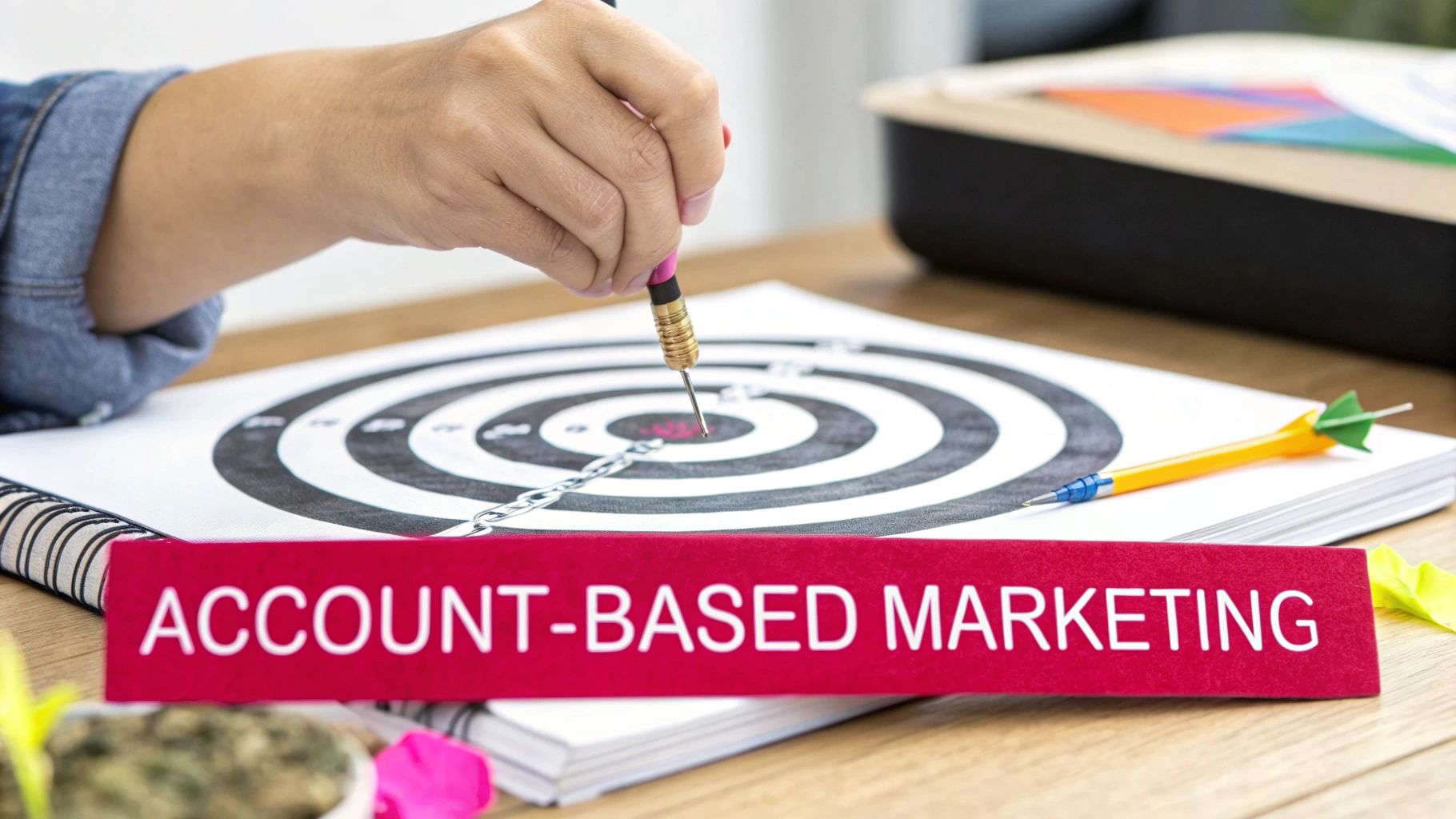
This laser-focused approach ensures marketing resources are spent on accounts with the highest potential for significant revenue. For instance, Snowflake, a cloud data platform, executes this brilliantly by creating hyper-targeted campaigns for specific industries like finance or healthcare, addressing their unique data compliance and operational needs. Similarly, ABM platforms like Terminus enable B2B SaaS companies to orchestrate multi-channel campaigns that engage entire buying committees within their target accounts.
How to Implement This Strategy
A successful ABM programme requires tight alignment between sales and marketing, a deep understanding of your target accounts, and technology to enable personalised outreach at scale. The aim is to create a seamless, cohesive experience for each target company.
- Apply the Pareto Principle: Start small and prove the concept. Begin by identifying your top-tier accounts, often the 20% that could generate 80% of your future revenue. Work with sales to build this "target account list" based on firmographics, technographics, and revenue potential.
- Create Customised Experiences: Generic messaging won't work in ABM. Develop bespoke assets like custom landing pages that greet the visitor by company name, case studies featuring clients from their industry, or even direct mail campaigns tailored to key decision-makers. This demonstrates genuine effort and understanding.
- Leverage Intent Data: Use third-party intent data to refine your targeting and timing. This data reveals which of your target accounts are actively researching solutions like yours. Prioritising outreach to these "in-market" accounts dramatically increases engagement and conversion rates.
Key Insight: ABM is a quality-over-quantity game. It shifts the focus from lead volume to account-level engagement and revenue, forcing a stronger, more strategic alignment between your marketing and sales departments for maximum impact.
3. Email Marketing Automation
Email marketing automation is the practice of using software to send targeted, triggered, and personalised emails to prospects and customers at the right time. Rather than manual one-off campaigns, this strategy leverages workflows and behavioural data to nurture leads, onboard new users, and re-engage dormant contacts. This intelligent approach ensures timely communication that guides recipients through the complex B2B buyer’s journey without constant manual intervention.

Pioneered by platforms like Marketo and HubSpot, this technique allows companies to deliver sophisticated, scalable communication. For instance, Pardot’s Engagement Studio enables marketers to build complex visual workflows that adapt based on a prospect's actions, such as downloading a white paper or visiting a pricing page. Similarly, Mailchimp's automated follow-up sequences for trial users can educate them on key features, increasing the likelihood of conversion to a paid plan.
How to Implement This Strategy
Effective automation goes beyond simple "drip" campaigns; it involves creating dynamic, responsive communication systems. The aim is to make your audience feel like they are receiving one-to-one communication, even when the process is fully automated.
- Use Progressive Profiling to Enrich Data: Instead of asking for all information upfront in a single form, use progressive profiling. Ask for a name and email first, then on subsequent interactions (like another content download), ask for company size or job title. This gradually builds a rich contact profile without creating high friction for the user.
- Set Re-engagement Campaigns: Don't let your database decay. Create automated workflows that trigger for leads who have been inactive for a specific period (e.g., 90 days). Send a sequence of emails offering your best-performing content or a special consultation to try and win them back before marking them as cold.
- A/B Test Subject Lines and CTAs: Continuously optimise your automated sequences. Systematically test different subject lines to improve open rates and various calls-to-action (CTAs) to boost click-through rates. Even small improvements in these key metrics can have a significant impact on your overall lead nurturing success.
Key Insight: The true power of B2B email marketing automation lies not in sending more emails, but in sending smarter ones. It transforms your email list from a static directory into a dynamic engine for lead qualification, customer education, and revenue generation.
4. Search Engine Optimization & SEM
Search Engine Optimisation (SEO) and Search Engine Marketing (SEM) are complementary B2B marketing strategies designed to capture high-intent leads directly from search engines like Google and Bing. SEO focuses on optimising your website to rank organically for relevant business queries, while SEM uses paid advertising (like Google Ads) to secure prominent placement for those same terms, driving immediate and qualified traffic.

This dual approach allows B2B companies to target decision-makers at the exact moment they are actively searching for solutions. For example, Salesforce runs highly targeted AdWords campaigns for "CRM software for small business" to capture leads ready to buy, while Moz has built its brand by creating in-depth SEO guides that rank #1 for informational queries, attracting a loyal audience of marketing professionals.
How to Implement This Strategy
A successful SEO and SEM strategy requires a deep understanding of your target audience's search behaviour. The goal is to be present and valuable wherever potential customers are looking for answers, whether through organic results or paid advertisements.
- Align Ad Copy with Landing Pages: Ensure your paid ad messaging directly reflects the content on the corresponding landing page. If your ad promises a "Free Demo of Project Management Software," the landing page must prominently feature the demo sign-up form. This consistency improves your Quality Score, lowers costs, and increases conversion rates.
- Target Long-Tail & High-Intent Keywords: Focus on specific, multi-word phrases that indicate a user is close to making a purchase decision (e.g., "enterprise cybersecurity compliance solution" instead of just "cybersecurity"). These keywords have lower competition and attract more qualified traffic. Use negative keywords (e.g., -free, -jobs) to filter out irrelevant searches and protect your budget.
- Optimise for Featured Snippets: B2B buyers often ask direct questions. Structure your content with clear headings and concise answers to target Google's "Featured Snippets" and "People Also Ask" sections. Ranking here positions your brand as an instant authority and can significantly increase organic click-through rates.
Key Insight: The most powerful B2B marketing strategies integrate SEO and SEM. Use SEM to gain immediate visibility and test messaging for high-value keywords, then use those insights to inform your long-term organic SEO efforts for sustainable, cost-effective growth.
5. LinkedIn & Social Media Marketing
In the B2B landscape, social media marketing moves beyond general brand awareness to become a powerful engine for lead generation, relationship building, and establishing thought leadership. Platforms like LinkedIn and Twitter are not just digital billboards; they are professional ecosystems where decision-makers congregate, share insights, and evaluate potential partners. This B2B marketing strategy focuses on leveraging these networks to connect directly with key accounts, nurture leads through valuable conversation, and amplify your brand's authority.
This approach is about precision and engagement rather than sheer volume. For instance, Microsoft's LinkedIn campaigns for its Talent Solutions are a masterclass in targeting, providing HR professionals with data-driven reports and tools that directly address their challenges. Similarly, Adobe successfully uses LinkedIn to showcase its company culture and innovation through employee-driven storytelling, transforming its workforce into credible brand ambassadors.
How to Implement This Strategy
Effective B2B social media requires a targeted, value-first approach. The goal is to integrate into professional conversations authentically, offering expertise that builds trust and guides prospects through their decision-making process.
- Activate Employee Advocacy: Your employees are your most trusted spokespeople. Encourage them to share company posts, articles, and updates with their own professional networks. This dramatically expands your reach and adds a layer of authenticity that branded posts alone cannot achieve. Provide pre-approved copy or key talking points to make sharing easy.
- Leverage LinkedIn Sales Navigator: For targeted outreach, LinkedIn Sales Navigator is an indispensable tool. It allows your sales team to find the right people and companies with advanced search filters, track key lead and account changes, and engage with prospects through personalised outreach. It bridges the gap between marketing-generated awareness and sales-led conversion.
- Repurpose Content for Engagement: Maximise your content's lifespan by adapting it for social platforms. Turn a detailed blog post into a series of short, insightful text posts, a compelling statistic into a visually engaging poll, or key takeaways from a webinar into a carousel post. This strategy keeps your feed active and caters to different consumption habits.
Key Insight: B2B social media success isn't measured in viral posts, but in meaningful connections. The objective is to consistently appear in the right feeds with the right message, positioning your brand as an indispensable resource for your target industry. To master this platform, you can explore more about effective B2B LinkedIn lead generation strategies to refine your execution.
6. Video Marketing & Webinars
In the B2B landscape, video marketing and webinars serve as powerful tools for humanising your brand, educating complex audiences, and accelerating the sales cycle. This strategy leverages engaging visual content, from short-form product demos to in-depth live events, to capture attention and demonstrate value in a way static text cannot. It's about showing, not just telling, allowing you to build a direct, interactive connection with prospects and customers.
This approach moves beyond simple brand awareness to facilitate genuine learning and lead generation. For example, Zendesk’s customer success webinar series helps existing and potential users master their platform, fostering loyalty and showcasing its advanced capabilities. Similarly, Cisco uses live-streamed product launches to create event-like excitement and provide detailed technical rundowns, engaging a global audience of IT professionals in real-time.
How to Implement This Strategy
To succeed with this B2B marketing strategy, you need a plan that balances live engagement with on-demand assets. The objective is to create valuable video content that serves different purposes, from top-of-funnel education to bottom-of-funnel decision-making.
- Gate Recordings for Lead Generation: Always record your live webinars. Afterwards, host the recording on a landing page behind a simple form. This transforms a one-time event into an evergreen lead-generation asset, allowing you to capture details from interested prospects long after the live session has ended.
- Repurpose Sessions into Micro-Content: A one-hour webinar contains a wealth of shareable moments. Edit the full recording to create multiple 1-2 minute video clips highlighting key tips, surprising stats, or compelling quotes. Share these bite-sized clips on social media platforms like LinkedIn to drive traffic back to the full on-demand webinar.
- Collaborate with Industry Experts: Boost credibility and expand your reach by co-hosting webinars with non-competing industry experts or complementary technology partners. Their endorsement lends authority to your brand, and you gain access to their established audience, creating a mutually beneficial marketing opportunity.
Key Insight: Effective video and webinar marketing is not a one-off tactic but a continuous content engine. By strategically recording, repurposing, and collaborating, you can turn a single event into a lasting library of assets that educates buyers and consistently generates high-quality leads.
7. Influencer & Thought Leadership Marketing
This B2B marketing strategy involves partnering with established industry experts, analysts, and micro-influencers to lend credibility to your brand and amplify your message. Instead of speaking directly to your audience, you leverage the trust and authority these figures have already built within niche B2B communities, effectively borrowing their influence to validate your own offerings.
This method moves beyond celebrity endorsements to focus on authentic, value-driven collaborations. For instance, major analyst firms like Gartner and Forrester frequently co-produce research reports with technology vendors, providing an authoritative stamp of approval. Similarly, a company like SalesLoft might create a video series featuring sales industry luminaries who share their expertise, associating the SalesLoft brand with top-tier knowledge.
How to Implement This Strategy
Effective influencer and thought leadership marketing requires careful selection and clear agreements to ensure the partnership is mutually beneficial and resonates with your target audience. The goal is to co-create content that adds genuine value, not just to promote a product.
- Formalise Co-Marketing Agreements: Don't rely on informal arrangements. Create clear, written agreements that outline deliverables, timelines, compensation (if any), usage rights, and performance expectations. This protects both parties and ensures everyone is aligned on the campaign's objectives from the start.
- Set Clear KPIs: Go beyond vanity metrics like views and likes. Define specific key performance indicators (KPIs) that align with business goals, such as downloads of a co-authored white paper, qualified leads generated from a webinar, or direct pipeline impact attributed to the influencer's promotional efforts.
- Measure Both Engagement and Pipeline: Track initial engagement metrics to gauge audience reception, but connect these efforts to your CRM to measure down-funnel impact. By tracking which leads sourced from an influencer campaign ultimately convert to customers, you can calculate a true ROI and justify future collaborations.
Key Insight: The most powerful B2B influencer partnerships are built on shared expertise and a commitment to educating the market. To truly establish your brand as an industry authority and drive B2B success, develop a comprehensive LinkedIn thought leadership strategy to amplify these collaborations.
8. Data-Driven Marketing & Analytics
In the B2B world, data-driven marketing is the practice of using analytics, attribution modelling, and customer data to inform and optimise every decision. Instead of relying on intuition, this strategy uses hard numbers to measure campaign performance, refine targeting, and personalise outreach at scale. It transforms marketing from a cost centre into a predictable revenue engine by connecting activities directly to outcomes.
This approach is about turning raw data into actionable intelligence. For instance, platforms like Marketo offer revenue cycle explorer dashboards that allow marketers to visualise the entire customer journey, identifying bottlenecks and high-performing touchpoints. Similarly, B2B companies leverage Google Analytics 360 to track complex conversion paths, understanding which content assets or channels contribute most effectively to lead generation and sales.
How to Implement This Strategy
To successfully implement data-driven B2B marketing strategies, you must establish a disciplined framework for collecting, analysing, and acting on information. The objective is to create a continuous feedback loop where performance data directly influences future campaigns.
- Define a Single Source of Truth: Your CRM, marketing automation platform, or a dedicated data warehouse should serve as the definitive source for all lead and customer data. This prevents discrepancies and ensures everyone from sales to marketing is working from the same, accurate information.
- Implement Strict UTM Tagging: Maintain rigorous discipline in using UTM parameters across all campaigns, from email to paid social ads. This allows you to precisely track the origin of website traffic and conversions in your analytics platform, revealing which channels deliver the highest ROI.
- Use Cohort Analysis to Refine Messaging: Group leads or customers by a common characteristic, such as their sign-up month or first marketing touchpoint. By analysing the behaviour of these cohorts over time, you can identify patterns and refine messaging to improve long-term engagement and retention.
Key Insight: Data-driven marketing isn't just about collecting data; it's about asking the right questions to turn that data into strategic action. A clear understanding of your key performance indicators is foundational to this entire process. To learn more about selecting the right metrics, explore these essential marketing performance indicators to guide your analysis.
9. Referral & Partner Marketing
At its heart, referral and partner marketing leverages the trust and credibility of existing relationships to generate new business. This B2B marketing strategy involves creating formalised programmes that incentivise satisfied clients (referrals) and strategic allies (partners) to recommend your products or services, creating a powerful, high-converting lead generation channel built on authentic advocacy.
This approach transforms your happiest customers and most aligned partners into an extension of your sales team. For example, the Dropbox for Business referral programme famously offered extra storage space to both the referrer and the new user, creating a viral loop of growth. Similarly, the Microsoft Partner Network enables technology companies to co-sell solutions, giving them access to Microsoft’s vast customer base and sales resources in a mutually beneficial arrangement.
How to Implement This Strategy
To successfully launch a referral or partner programme, you need a clear structure, compelling incentives, and robust support systems. The aim is to make it as easy and rewarding as possible for others to advocate for your brand.
- Provide Partners with Ready-to-Use Assets: Equip your referrers and partners with a complete marketing toolkit. This should include co-branded landing pages, pre-written email templates, social media copy, and product one-pagers. By removing the creative burden, you significantly lower the barrier to participation and ensure brand consistency.
- Set Clear SLAs for Lead Follow-Up: Trust is paramount. Establish and honour strict Service Level Agreements (SLAs) for how quickly your team will contact and engage with referred leads. A fast, professional follow-up respects the relationship your partner has with the prospect and reinforces the value of your programme.
- Publicly Recognise Top Referrers: Acknowledge and celebrate your most successful advocates. Feature top partners in your newsletter, create a "Partner of the Month" award, or offer exclusive tiers with additional benefits. Public recognition not only motivates current partners but also attracts new ones by showcasing the potential rewards.
Key Insight: The most effective referral and partner marketing strategies are not just transactional; they are relational. Success depends on building genuine, mutually beneficial relationships where your partners feel valued and are equipped with everything they need to succeed on your behalf.
10. Marketing Automation & AI-Driven Personalisation
Marketing automation combined with AI-driven personalisation uses technology to deliver tailored experiences at scale. This strategy goes beyond basic email scheduling to predict buyer intent, dynamically adjust website content, and automate conversations, ensuring every touchpoint is relevant to the individual prospect. It allows B2B marketers to streamline repetitive tasks while creating hyper-personalised journeys that nurture leads more effectively.
This powerful combination moves B2B marketing from a one-to-many broadcast model to a one-to-one dialogue. For example, Drift’s AI-powered chatbots engage high-intent website visitors in real-time, qualifying leads and booking demos without human intervention, significantly accelerating the sales cycle. Likewise, Salesforce Interaction Studio enables businesses to track user behaviour across channels and serve up the most relevant content or product recommendations instantly, making prospects feel understood.
How to Implement This Strategy
Effectively implementing these advanced B2B marketing strategies requires a phased approach that balances technology with human oversight. The objective is to automate processes without losing the crucial element of authentic connection.
- Start with Small, High-Impact Pilots: Instead of a full-scale overhaul, begin by automating a specific, measurable process. Deploy an AI chatbot on your highest-traffic service or pricing pages to handle common queries and capture leads. This allows you to prove ROI and gather learnings before expanding.
- Continuously Train AI with Fresh Data: AI models are only as good as the data they learn from. Regularly feed your systems with new interaction data, CRM updates, and customer feedback. This ensures the personalisation algorithms remain accurate and effective, adapting to changing market dynamics and customer behaviours.
- Maintain Human Oversight: While automation handles the legwork, strategic human input is essential. Define clear rules for personalisation, review AI-driven conversations for quality assurance, and have a human ready to step in for complex or high-value interactions. This hybrid approach ensures efficiency and a positive customer experience.
Key Insight: The true power of automation and AI in B2B marketing isn't just efficiency; it's the ability to create uniquely relevant experiences for every single account. This level of personalisation builds deeper relationships and accelerates purchasing decisions. To see how these concepts are applied, you can find inspiration from a variety of marketing automation workflow examples.
B2B Marketing Strategies Comparison Matrix
| Marketing Strategy | Implementation Complexity 🔄 | Resource Requirements ⚡ | Expected Outcomes 📊 | Ideal Use Cases 💡 | Key Advantages ⭐ |
|---|---|---|---|---|---|
| Content Marketing | Medium – sustained effort over time | Moderate – content creation & SEO | Long-term organic lead generation | Building thought leadership, nurturing prospects | Builds trust, multi-channel reach |
| Account-Based Marketing (ABM) | High – personalized campaigns | High – sales & marketing alignment | High ROI on key accounts, shortened sales | Targeting high-value accounts with personalized outreach | Strong relationship building, focused ROI |
| Email Marketing Automation | Medium – setup of workflows | Moderate – CRM integration & list maintenance | Scalable lead nurturing, timely engagement | Nurturing leads, onboarding, upselling | Scales outreach, detailed tracking |
| SEO & SEM | Medium-High – ongoing optimization | Moderate to High – SEO & ad spend | Qualified traffic, clear ROI | Capturing active buyer intent via search | Pay-per-click control, measurable results |
| LinkedIn & Social Media Marketing | Medium – ongoing content & ads | Moderate – ad spend and content creation | Brand awareness, lead generation | Engaging professionals and niche B2B communities | Access to decision-makers, rich targeting |
| Video Marketing & Webinars | High – production & promotion effort | High – production cost & platform setup | High engagement, qualified demo requests | Educating buyers, product demos, real-time interaction | Drives engagement, expert positioning |
| Influencer & Thought Leadership | Medium-High – identifying & managing | Variable – influencer costs vary | Accelerated credibility and reach | Leveraging trusted industry voices for amplification | Builds social proof, targeted engagement |
| Data-Driven Marketing & Analytics | High – integration & data governance | High – analytics tools & expertise | Optimized spend, improved conversion rates | Measuring & optimizing campaign performance | Deep insights, budget efficiency |
| Referral & Partner Marketing | Medium – program management | Moderate – partner enablement & incentives | High-quality, low-cost leads | Leveraging satisfied clients and partners | Trusted leads, strong partner relations |
| Marketing Automation & AI Personalization | High – complex integrations & AI training | High – AI platforms & data compliance | Hyper-personalized experiences at scale | Predictive lead scoring, real-time personalization | Improves qualification, saves resources |
Building Your Integrated B2B Marketing Engine
Navigating the complex landscape of modern B2B marketing can feel like assembling a high-performance engine without a manual. We have explored a comprehensive toolkit of powerful B2B marketing strategies, from the foundational pillars of Content Marketing and SEO to the precision-targeting of Account-Based Marketing and the personalised engagement of AI-driven automation. Each strategy represents a vital component, powerful on its own but truly transformative when working in concert.
The temptation might be to pick one or two tactics and hope for the best. However, the most successful organisations understand that siloed efforts yield limited results. The real power lies in integration, creating a symbiotic system where each element amplifies the others. Your insightful content marketing becomes the fuel for your SEO rankings and the bait for your email automation sequences. The rich data gathered from your analytics platform informs the hyper-personalisation of your ABM campaigns. Your dynamic LinkedIn presence serves as the stage for your webinars and the platform to showcase your thought leadership. This interconnectedness is not a "nice-to-have"; it is the core principle of sustainable growth in the B2B sector.
From Individual Tactics to a Cohesive System
To move beyond a random assortment of marketing activities, you must adopt a strategic, holistic mindset. The journey from a collection of tactics to a fully integrated marketing engine requires a clear, step-by-step approach.
Begin by revisiting your foundations: your Ideal Customer Profile (ICP) and the intricate buying journey they undertake. Who are you selling to? What are their pain points, their business objectives, and their information-seeking behaviours? Mapping this journey reveals the critical touchpoints where specific strategies will have the most impact.
With this understanding, you can begin to orchestrate your efforts:
- Align Content with the Funnel: Develop top-of-funnel content (blog posts, infographics) to attract awareness, middle-of-funnel content (webinars, case studies) to nurture consideration, and bottom-of-funnel content (demos, consultations) to drive decisions.
- Connect Channels Synergistically: Use your LinkedIn and social channels to promote your latest long-form content. Repurpose key webinar insights into video clips, blog posts, and quote graphics. Every piece of content should be a multiplier, not a single-use asset.
- Leverage Data as the Central Nervous System: Your analytics are not just for monthly reports. Use real-time data to refine your email sequences, adjust your SEM bids, and identify high-engagement accounts for your ABM efforts. Data should flow between your marketing channels, creating a continuous loop of feedback and optimisation.
The Path to Mastery and Sustainable Growth
Achieving mastery in B2B marketing is not about flawlessly executing a dozen strategies from day one. It is an iterative process of building, measuring, and refining. Start small by integrating two or three complementary strategies, for instance, combining Content Marketing with SEO and Email Automation. Establish clear key performance indicators (KPIs) for each, meticulously track your results, and be agile enough to pivot based on what the data tells you.
The ultimate goal is to create a predictable, scalable, and revenue-generating machine. When your B2B marketing strategies are fully integrated, marketing ceases to be a cost centre and becomes a primary driver of business growth. You move from chasing leads to building relationships, from shouting into the void to having meaningful conversations with the right people at the right time. This strategic integration is what separates fleeting campaign success from long-term market leadership and builds a resilient brand that can thrive in the dynamic UAE market and beyond.
Ready to stop juggling tactics and start building a powerful, integrated marketing engine? As a creative and data-driven agency, Grassroots Creative Agency specialises in weaving these distinct B2B marketing strategies into a cohesive system that drives measurable results. Let us help you build the marketing foundation your business deserves.

